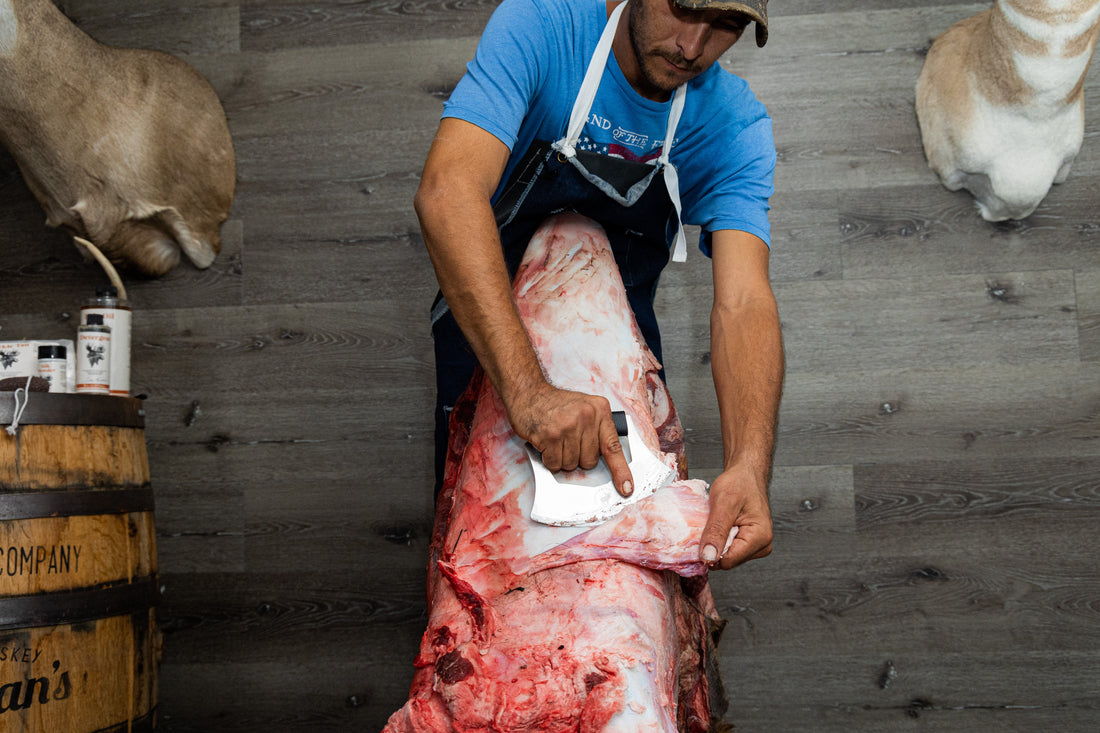Why
One of the most important steps in the tanning process is to properly take care of the hides and skins from the very start. Once an animal is taken, bacteria immediately starts to grow in the body and hide. An excessive amount of bacteria will rot the hide and cause hair slippage, so it is essential that the hide not only be removed as soon as possible, but also fleshed and salted in a timely manner.
To prevent the growth of bacteria, it is important to act right away especially for animals taken in warm weather such as Texas whitetail for example. The hide will start to putrefy quicker than an animal taken in cooler weather, like a Colorado winter moose.
How
Once the hide or skin is removed, using a sharp knife or fleshing tool, immediately clean it of excess flesh, fat and membrane. Next step is to salt the hide as salting draws out the moisture which temporarily preserves it and keeps it from rotting and causing hair slippage.
If possible and weather permitting, salt your hide or skin in the field or shortly afterward. Lay the hide flesh side up and apply a heavy layer of table or canning salt – not rock salt as the crystals are too large to break down. Rub this into all areas of the flesh and let it sit overnight. The next day shake off the excess salt and apply a fresh layer and let this sit again overnight.
Dry the hide in a cool area for 2-3 days – not in direct sunlight or extreme heat as this can harden the natural oil and grease in the hide making it difficult to rehydrate. The dried hide can be kept in this state until it is ready to be tanned.
No matter what tanning process used, a hide or skin not properly taken care of from the beginning will end in a less than desirable result.


